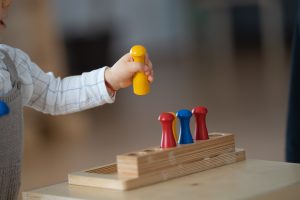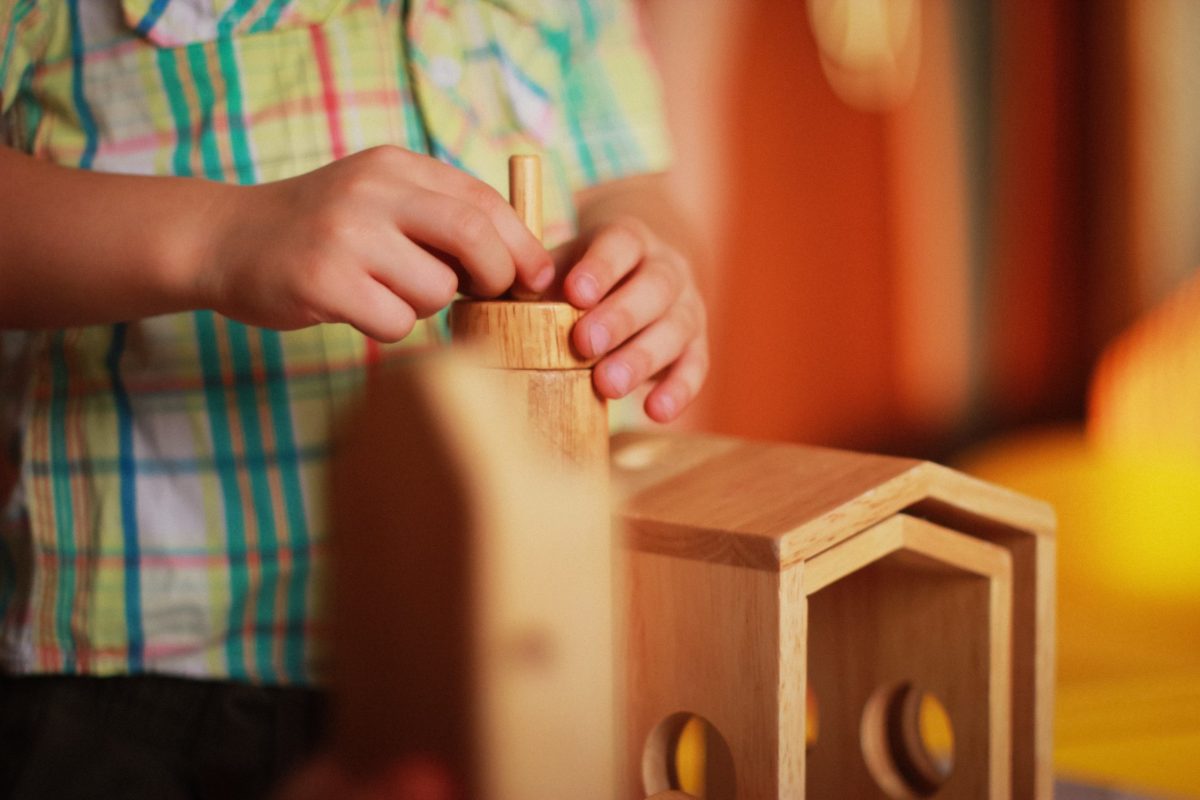The Montessori approach has gained popularity in recent years, finding its way into more homes and schools than ever before. However, along with this increased popularity have also come plenty of misconceptions about Montessori principles and methods. Here, we’ll explore some of the most common Montessori myths and misunderstandings and explain why — in most cases — they aren’t true.

Montessori Myths and Misconceptions
There is no shortage of misconceptions out there. Let’s debunk them one by one!
1. Montessori Is Only for Rich People
One of the most prominent Montessori myths is that it’s exclusive to people with money. Did you know Montessori started with humble beginnings? The history of the Montessori method began with Maria Montessori’s work with poor, disadvantaged children in an inner city district in Rome. Dr. Montessori’s work is rooted in the belief that every child is born with an absorbent mind and can thrive in a prepared environment.
It’s true that some schools and companies capitalize on the Montessori name, and high-quality Montessori materials may carry a higher price tag. However, it’s free for any family to apply Montessori principles like respect for the child, observation, and freedom within limits. These principles are the core of the Montessori method and can be applied with any budget in any home.
2. Montessori Is Too Complicated for Homeschooling
It is a misconception that Montessori is too difficult for parents to introduce at home, as the Montessori by Mom team will tell you. Montessori homeschool curriculums simplify education by stripping it down to a few fundamental principles. It embraces a child-centered approach that revolves around listening to and following the individual child’s needs and interests.
Creating a purposeful, prepared, and well-organized Montessori homeschool environment is simple when you prioritize children’s independence and growth. Therefore, any parent can use Montessori at home with a little time, patience, and guidance.
3. It’s Only For Preschoolers
Many people believe that Montessori curriculum is only for preschoolers because it’s not competitive enough to keep up with a more traditional education style.
This perspective doesn’t capture the full truth. It suggests that children can only learn effectively with adult-led education, an idea that research has debunked. It also implies that metrics like standardized test scores are the only measures of a successful education. In Montessori, education is also successful when it preserves a child’s innate love for learning, teaches them valuable life skills, and prepares them to contribute to their families and societies.
It’s true that Montessori curriculum doesn’t revolve around standardized test scores. Instead, Montessori meets children where they are at every stage of their development.
Montessori materials, like Botany Cards, teach children about academic subjects while simultaneously improving softer skills. Instead of being told when they are going to learn something, Montessori children are encouraged to remain curious and open according to their interests.
4. Montessori Materials Are Too Expensive
 Montessori materials can be expensive, so there is some truth to this Montessori myth. Still, their cost is influenced by several factors. Firstly, the materials used are durable and made with high-quality materials, meaning they will last for years. Secondly, the craftsmanship and expertise required to make them drive up production costs.
Montessori materials can be expensive, so there is some truth to this Montessori myth. Still, their cost is influenced by several factors. Firstly, the materials used are durable and made with high-quality materials, meaning they will last for years. Secondly, the craftsmanship and expertise required to make them drive up production costs.
However, buying expensive materials isn’t necessary to apply Montessori at home. Many Montessori homeschoolers cut costs by creating DIY Montessori activities and materials, heading to thrift stores, and repurposing household items; some even ask for Montessori materials instead of standard presents and gifts on special occasions.
5. Montessori Kids Can Do Whatever They Want
Montessori emphasizes individual potential; it also teaches children to take responsibility for themselves, others, and their environment.
Dr. Montessori talked a lot about this. She said she once had a visitor ask a child if they did as they pleased, to which the child replied, “No, but we like what we do!”
If you visit a Montessori environment, you’ll find a remarkably calm atmosphere (most of the time). Because kids can choose for themselves from carefully chosen activities, they feel more motivated to learn.
Another aspect of personal responsibility is freedom within limits. Giving children freedom within limits maintains order without having to resort to punishment. Children learn they can explore while also understanding appropriate boundaries. For instance, children can move freely, but they learn that running may cause accidents and is not allowed inside.
6. Everything In Montessori Is Made of Wood

In reality, not everything in Montessori is made from wood, despite the impression Pinterest may give! Dr. Montessori favored natural materials like wood, paper, metal, and glass because they help connect children to their environments and the natural world. Real materials are hugely tactile, unlike plastic, which you will only see a little of in a Montessori environment because it’s artificial and not particularly exciting for exploring hands.
7. Montessori Hinders Creativity
 In Montessori, kids explore reality before fantasy, especially in the first plane of development between birth and age six. This is because of Dr. Montessoir’s belief that children at this age struggle to separate the abstract from the concrete. Dr. Montessori pointed out that kids are more interested in the reality in front of them, like the beauty of the natural world.
In Montessori, kids explore reality before fantasy, especially in the first plane of development between birth and age six. This is because of Dr. Montessoir’s belief that children at this age struggle to separate the abstract from the concrete. Dr. Montessori pointed out that kids are more interested in the reality in front of them, like the beauty of the natural world.
Every Montessori homeschool environment will teach about reality slightly differently, but a common theme is enabling children to actively engage with the real world. For instance, children learn practical skills like food preparation instead of playing in a pretend kitchen.
Some argue that this approach limits creativity, but it’s important to understand that Montessori education establishes a solid foundation in reality, which can serve as a springboard for imaginative exploration.
8. It’s Too Structured and Rigid
Some think that in Montessori, anything goes, while others erroneously see it as a strict boot camp. Limits and structures exist, just like anywhere you go. Kids are expected to respect their peers, environments, and themselves, but within this, they are free to learn, choose work that interests them, and take breaks when needed.
9. Montessori Is The Only Effective Approach
We obviously love Montessori — otherwise, we wouldn’t write about it or create Montessori materials for families worldwide! However, Montessori may not suit everyone, and it’s certainly not the only way to give your child a high-quality education. There are many approaches that can help children learn in a loving, respectful environment. It’s up to each parent to find the parenting and education approaches that most resonate with their family’s needs and preferences.
Choosing The Right Education for Your Family
We hope that this article has been helpful in debunking common Montessori myths. Just as there are many families who cherish Montessori principles, the method also has its share of critics — and that’s OK! Just like any pedagogy, it’s important to recognize that what works for one child, family, or educator may not be the best fit for another. So, whether you choose Montessori or not, meeting your child’s needs is ultimately the most important thing.
Which Montessori myths should we debunk next time? Leave us a comment and let us know!




0 Comments